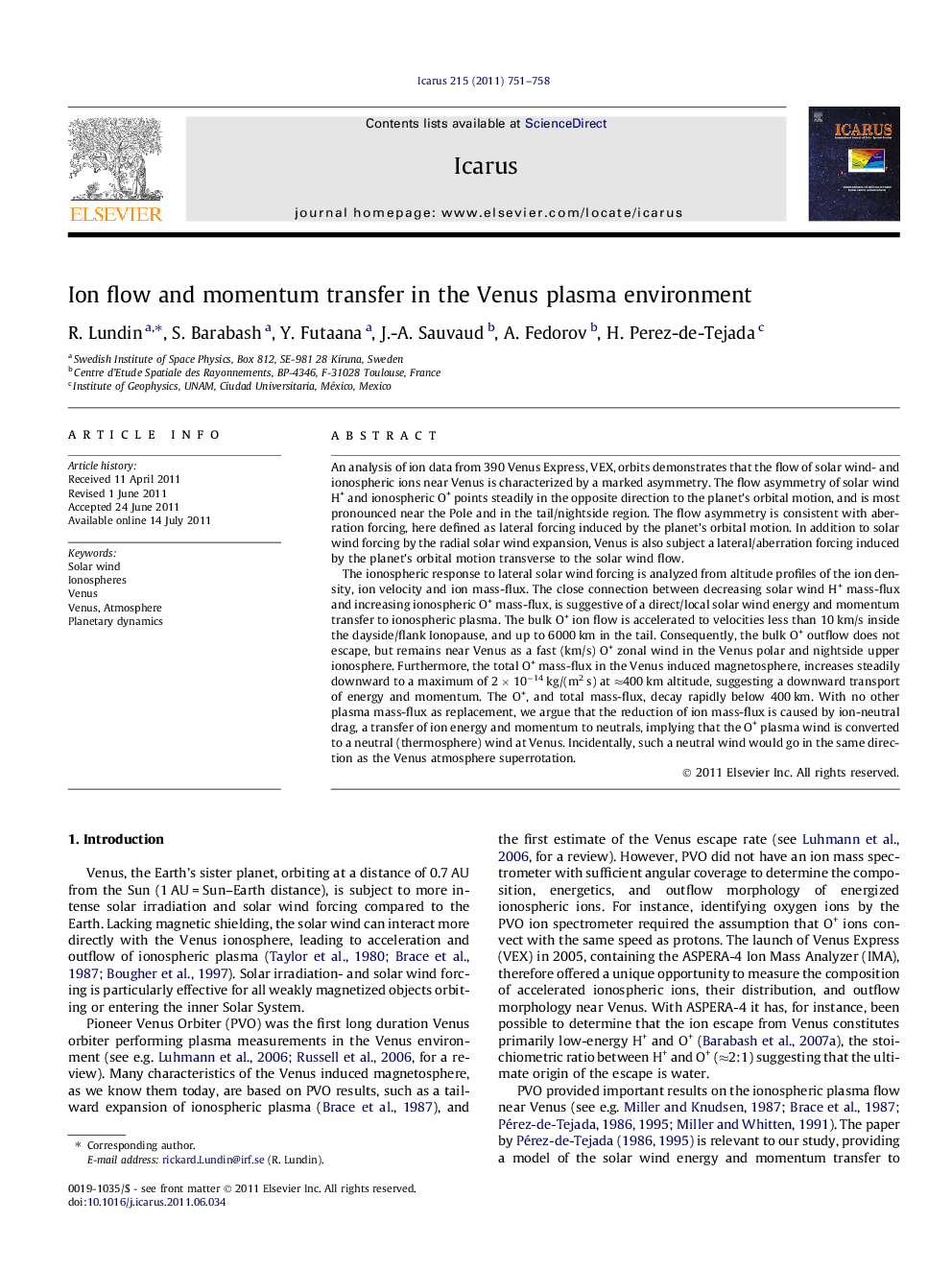| Article ID | Journal | Published Year | Pages | File Type |
|---|---|---|---|---|
| 1773862 | Icarus | 2011 | 8 Pages |
An analysis of ion data from 390 Venus Express, VEX, orbits demonstrates that the flow of solar wind- and ionospheric ions near Venus is characterized by a marked asymmetry. The flow asymmetry of solar wind H+ and ionospheric O+ points steadily in the opposite direction to the planet’s orbital motion, and is most pronounced near the Pole and in the tail/nightside region. The flow asymmetry is consistent with aberration forcing, here defined as lateral forcing induced by the planet’s orbital motion. In addition to solar wind forcing by the radial solar wind expansion, Venus is also subject a lateral/aberration forcing induced by the planet’s orbital motion transverse to the solar wind flow.The ionospheric response to lateral solar wind forcing is analyzed from altitude profiles of the ion density, ion velocity and ion mass-flux. The close connection between decreasing solar wind H+ mass-flux and increasing ionospheric O+ mass-flux, is suggestive of a direct/local solar wind energy and momentum transfer to ionospheric plasma. The bulk O+ ion flow is accelerated to velocities less than 10 km/s inside the dayside/flank Ionopause, and up to 6000 km in the tail. Consequently, the bulk O+ outflow does not escape, but remains near Venus as a fast (km/s) O+ zonal wind in the Venus polar and nightside upper ionosphere. Furthermore, the total O+ mass-flux in the Venus induced magnetosphere, increases steadily downward to a maximum of 2 × 10−14 kg/(m2 s) at ≈400 km altitude, suggesting a downward transport of energy and momentum. The O+, and total mass-flux, decay rapidly below 400 km. With no other plasma mass-flux as replacement, we argue that the reduction of ion mass-flux is caused by ion-neutral drag, a transfer of ion energy and momentum to neutrals, implying that the O+ plasma wind is converted to a neutral (thermosphere) wind at Venus. Incidentally, such a neutral wind would go in the same direction as the Venus atmosphere superrotation.
► Ion data from 390 Venus Express orbits are analyzed. ► Lateral solar wind forcing produce asymmetric flow of O+ opposite to the planet’s orbital motion. ► Average O+ flow speed less than escape velocity – give zonal plasma wind at Venus. ► Nightside plasma wind goes in the direction of the Venus atmosphere superrotation. ► The average O+ mass flux maximizes at 500 km altitude; drastic drop below 500 km.
